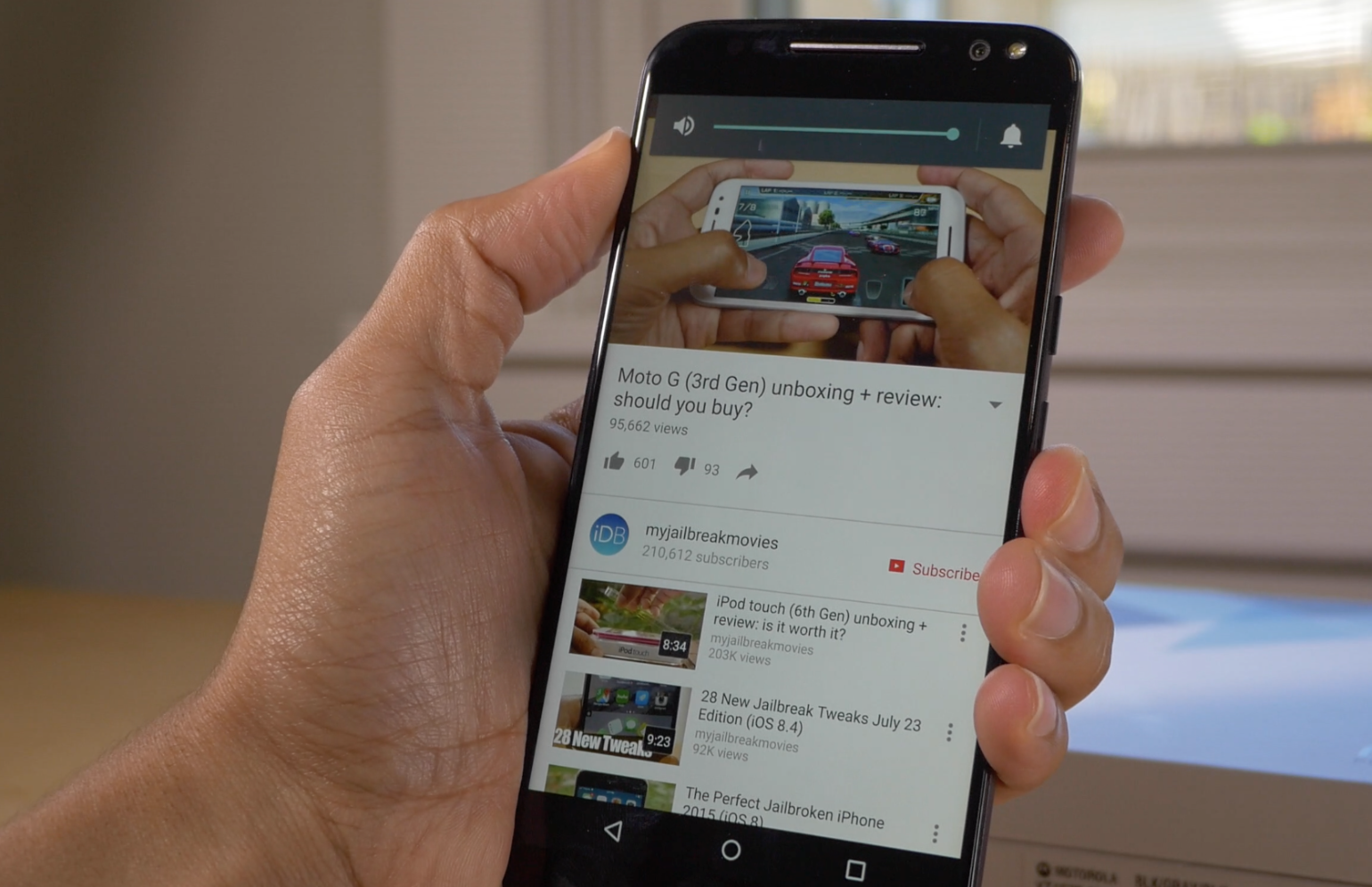
As you guys know, I’m a fan of the Moto G—Motorola’s off-contract budget phone that packs in a surprising amount of good features for a super-cheap price. As I stated in my review, the Moto G is a good choice for anyone wishing to dip their toes into the Android waters, or for anyone who needs a cheap second smartphone.
The Moto X Pure Edition ($399.99 on Amazon), is a whole different beast altogether. It looks similar to the Moto G in build material, but it’s way bigger, has a 5.7″ QHD screen at 1440p, a 21 megapixel rear-facing shooter, a front-facing flash, captures 4K video, and features extremely fast charging.
Unlike the budget Moto G, the Moto X Pure Edition is Motorola’s de facto flagship offering for 2015. At $399 for the base model, it’s more than double the price of Motorola’s popular Moto G, yet much cheaper than major “flagship” models from big named Android OEMs.
How does it stack up with the competition? How does it compare with the iPhone 6 Plus—its closest iOS competitor? Check out our full video review for all of the details.
Specs
Here are some of the major specs associated with the Moto X Pure Edition:
- 1.8GHz Qualcomm® Snapdragon 808 with hexa-core CPU
- 600Mhz Adreno 418 GPU
- Android 5.1.1 Lollipop
- 3GB of RAM
- 16GB of flash storage (base model)
- Micro SD Card support (up to 128GB)
- 5.7″ QuadHD display (1440×2560) with 520ppi
- 4G LTE cellular radio
- 3000 mAh battery with “all day” battery life
- TurboPower charger
- Water repellent coating
- 21 megapixel f/2.0 aperture rear-facing camera
- Phase Detect Auto-Focus
- 1080p HD video (60 fps)
- 4K video (30fps)
- 5 megapixel front-facing camera with f/2.0 aperture
- Nano SIM card slot
- Bluetooth 4.1
- NFC
- Front facing Stereo speakers
As you can see, that’s a pretty good offering for $399 unlocked. But the sum of the parts is what really matters. Let’s see if all of these pieces can mesh together for a complete package.
Unboxing & first impressions
If you’ve unboxed the aforementioned Moto G, then you know that its packaging leaves a lot to be desired in terms of quality. The Moto G comes packed in economy cardboard that seems appropriate enough for a pre-paid phone that’s sold on the shelves of your local gas station or Walmart.
The Moto X’s packaging feels more premium. Its box is quite a bit larger than the Moto G’s box as well.
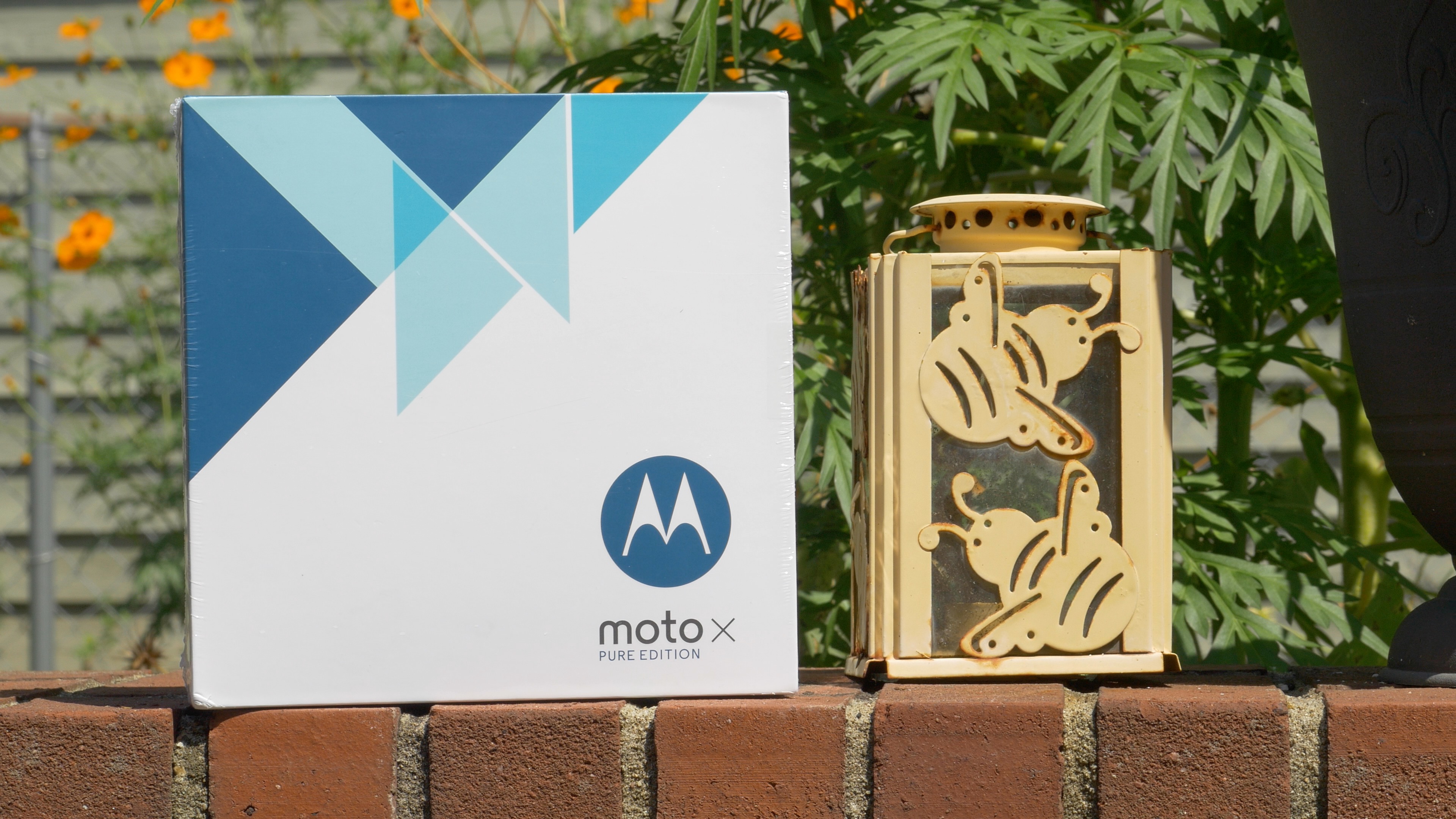
Inside the package, you’ll find the Moto X Pure Edition, a micro USB TurboPower charger, a bumper, SIM eject tool, and plenty of documentation. Oddly enough, Motorola continues to pack in an all-in-one power charger solution, meaning that the USB micro cable doesn’t separate from the power brick itself. You’ll need an extra cable if you’d like to connect to a computer or another USB device.
The inclusion of the free bumper is nice. I have a feeling that the Moto X’s anodized outer edge is extremely easy to scratch and scar. Motorola probably thought the extra cost for the bumper was minimal compared to the amount of complaints that they’d have about the outer edge getting banged up.
Needless to say, I immediately placed the Moto X into the bumper. While it isn’t the prettiest thing in the world, I really want to keep this device looking nice.
Customizations
Although you can buy the Moto X from Amazon, you benefit from more customization options if you opt to use Motorola’s in-house Moto Maker tool. Moto Maker allows you to customize the following things:
Ultimately, I decided to go the Amazon route, because Amazon provides faster shipping time. Keep in mind that if you choose to order from Amazon, you don’t have nearly the amount of options that you’ll find on Moto Maker.
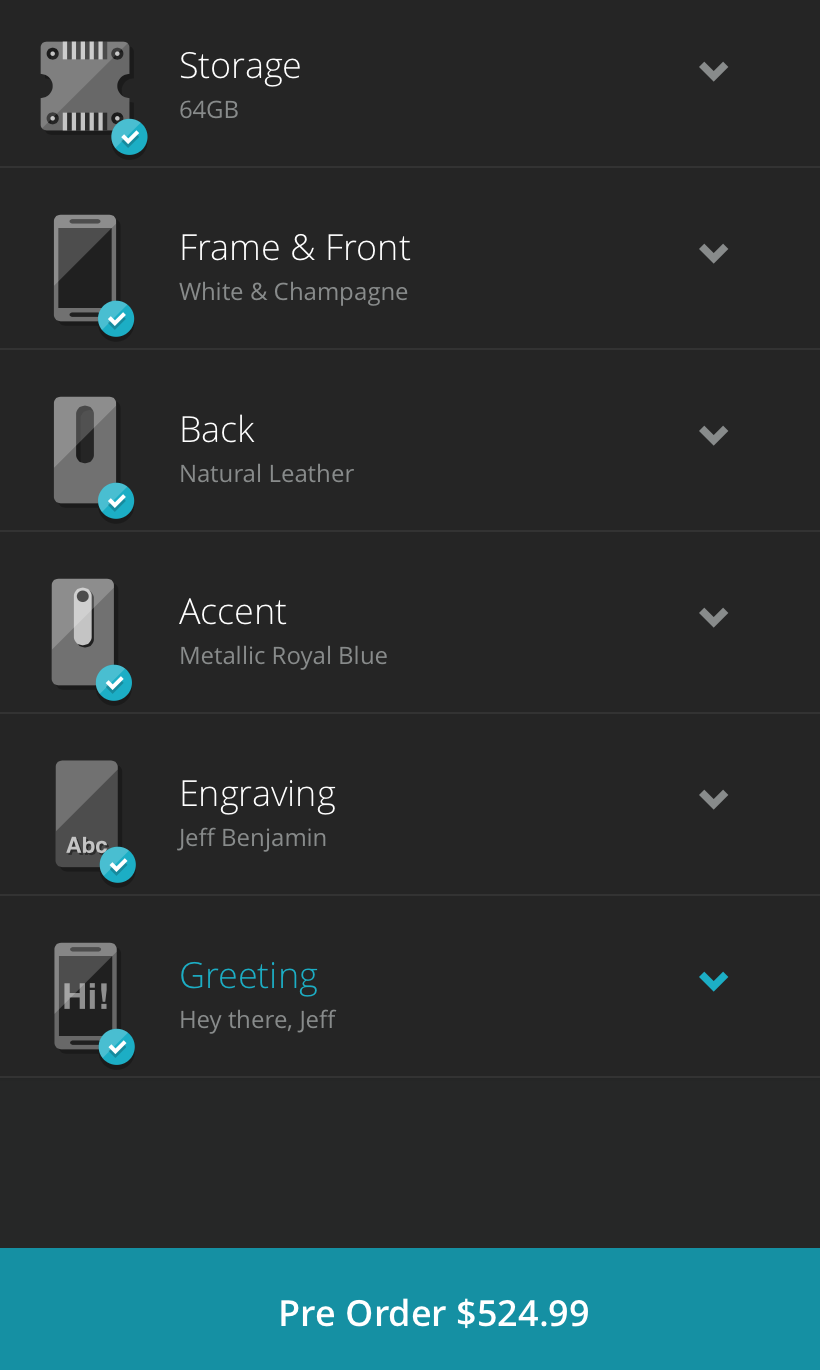
Although the Moto X starts at $399.99, the price can substantially rise when you take advantage of customization options like increased storage and leather back covers. The most expensive Moto X comes in around $524.99. That’s quickly approaching upper-tier flagship smartphone levels.

Build quality
The first word that came to my mind when holding the Moto X is “solid”. Like the Moto G, the build quality benefits a lot from its aluminum underpinnings.
I opted for an “off the shelf” Moto X, so I didn’t go through Motorola’s Moto Maker program to customize the look of my device. Instead, I received a black Moto X with dark aluminum accent with a black rubberized back cover. Despite the fact that the cover is replaceable, it sits flush with the aluminum trim at the edge of the device and thus maintains a high quality feel.
The external buttons on the side of the device can easily be distinguished from one another thanks to the indentions on the outside of the power button. The buttons also have a responsive click, and don’t feel jiggly or lose in their positions.
The budget model Moto G was remarkable, because it had good build quality for a super-cheap price. The Moto X costs more than the Moto G, and as such, you can tell that the build quality has been turned up a few notches.
Screen
The Moto X boasts a 5.7″ QHD screen with 520ppi and its screen is crisper than the Moto G. That said, I had a hard time telling any difference between it and the iPhone 6 Plus’ screen, even though the iPhone 6 Plus’ screen has less pixels.
I also noticed that the Moto X screen runs a little warm with regard to color temperature. When browsing the web via Chrome, there’s a noticeable yellow tinge, especially when compared with the iPhone 6 Plus’ screen.
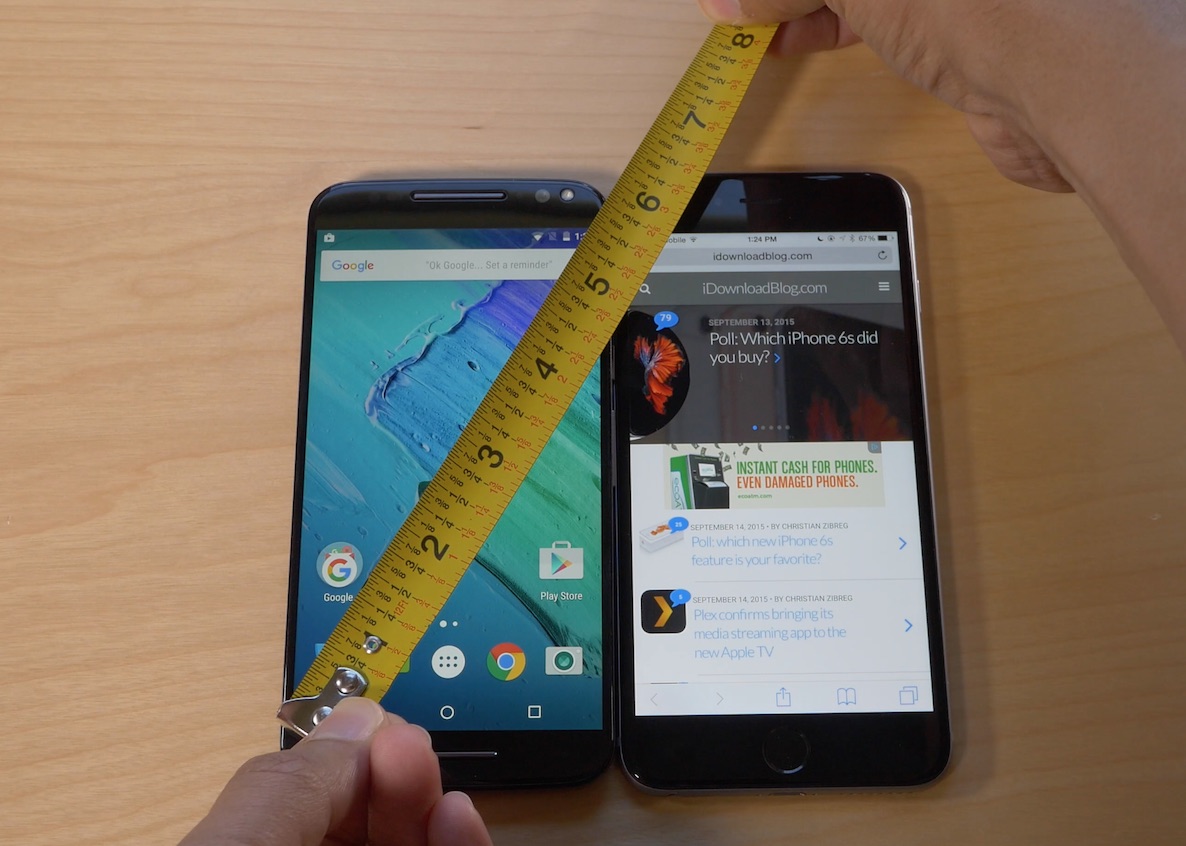
Although the Moto X’s display is technically larger than the 5.5″ iPhone 6 Plus, because of the on-screen Android buttons, you can actually get more text on screen at once when browsing the web on the iPhone.
It’s worth mentioning that, despite the difference in screen size, the Moto X has a smaller vertical footprint than the iPhone 6 Plus. Even with the supplied bumper on the device, the Moto X is still shorter and therefore a bit more pocketable. That said, the Moto X is also noticeably thicker, due to its tapered edge that curves outwardly and non-unibody design.
Sound
Sound is one of the best features found on the Moto X—at the same time, it’s also at the center of one of the device’s biggest flaws.
This device has true sterero front facing speakers. The Moto G fooled me at first, and appeared to have stereo speakers, but only one of its front-facing grills featured audio output. With the Moto X, there is no such tomfoolery; you get sound out of both speakers simultaneously.
The Moto X’s speakers are…well…incredibly loud. These are some of the loudest speakers that I’ve heard from a smartphone.
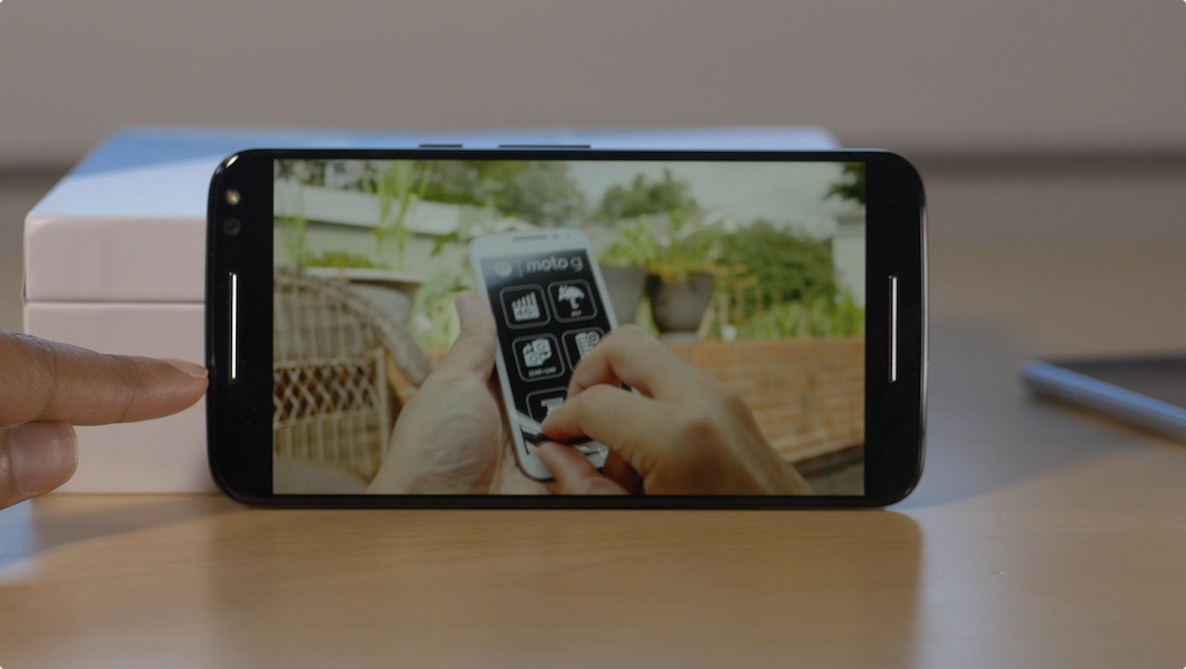
Sadly, distortion and sound glitches occur when the Moto X’s screen is rotated. The distortion also occurs when unlocking the device, or when simply adjusting the volume of the device. It doesn’t happen all of the time, but it’s there, and it’s definitely noticeable. To be honest, I don’t see how Motorola felt it was okay to ship a device with such an issue, especially a mid-tier device like the Moto X.
I found it even odder that the Moto X lacks a pair of earbuds. Even a pair of cheap headphones would have been better than nothing.
Performance
The Moto X comes with the same system on a chip that’s contained in the LG G4—the Snapdragon 808. It’s a slightly lesser version of Qualcomm’s top of the heap Snapdragon 810 processor, but that chip suffers from overheating issues.
The 808 doesn’t scream, but it drives the Moto X competently. Here are the Geekbench 3 benchmark results for the Moto X vs the iPhone 6 Plus:

Moto X Pure Edition on the left, iPhone 6 Plus on the right
Although the benchmarks speak to the Moto X’s ability to perform better at multi-threaded tasks and the iPhone’s ability to perform better and single-threaded tasks, in real world usage I wasn’t able to discern outright huge differences.
In some games, like Asphalt 8, textures and particle effects seemed more pronounced on the iPhone, while the frame rate felt more solid on the Moto X. I think it’s safe to say that both of these phones can perform well when it comes to gaming.
The Moto X has 2GB more of memory than the iPhone 6 Plus, yet I felt that multitasking and other RAM intensive tasks were a wash. I found my Chrome tabs refreshing on the Moto X just as much as my Safari tabs on the iPhone 6 Plus. Having 3GB of RAM is nice, but I didn’t feel like it made a noticeable difference when it came to real world usage.
Battery Charging
Motorola packs in the latest generation of its TurboPower charger. The included TurboPower 25 charger promises to provide a charge that lasts up to 10 hours in just 15 minutes.
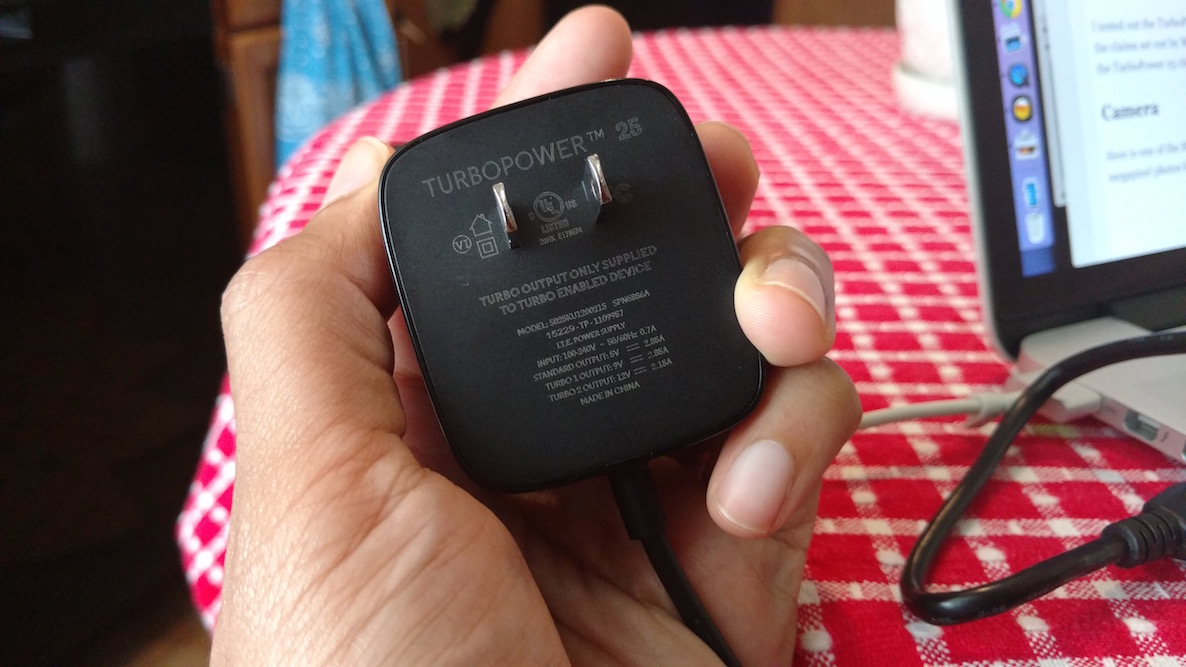
The TurboPower 25 charger is capable of Turbo 2: 12v/2.5A or Turbo 1: 9V/2.85A charger for 25Watts of power output. That’s substantially more than your typical phone charger, and allows for the Moto X Pure to have ridiculously fast charging times while the device is depleted. Charging will slow as charging progresses.
I tested out the TurboPower charger on a Moto X Pure that was almost completely depleted of battery, and it worked fairly close to the claims set out by Motorola. If you’re someone who always finds themselves low on battery at the most inopportune times, then the TurboPower 25 charger could be a big help to you.
Camera
Here is one of the Moto X’s big claims to fame—picture quality. Thanks to the Snapdragon 808, the Moto X can support 21 megapixel photos for extra large photos. It also supports 4K video at 30fps out of the box.

The Moto X performs fairly well in low light conditions. The following photos were taken with just a single overhead CFL bulb in a fairly dark kitchen setting. All camera settings were set to automatic.


Autofocus with the Moto X is really fast in both still picture mode and while shooting video. I also found it easy to achieve the depth of field look that most shooters want while focusing on up close subjects.
4K video is another big draw for the Moto X. It’s a feature that’s beginning to trickle down to lesser hardware, but it’s still not as pervasive as you might think it’d be at this point.
4K videos on the Moto X are shot at about 6.3MB/second. That’s highly comparable to the iPhone 6s Plus 6.25MB/second rate. Both devices are using H.264 compression, so that shouldn’t come as a huge surprise. One big bonus for the Moto X over the iPhone is that it comes with expandable storage via its SD Card slot. You could easily slap a cheap sub $20 64GB card in this thing and have plenty of space for your 4K videos.
Software
The Moto X is a “Pure Android” device in that it’s not inundated with unnecessary skins, duplicate apps, or third-party bloatware. It’s about as close as you can get to a stock Android experience without buying a Nexus-branded phone.
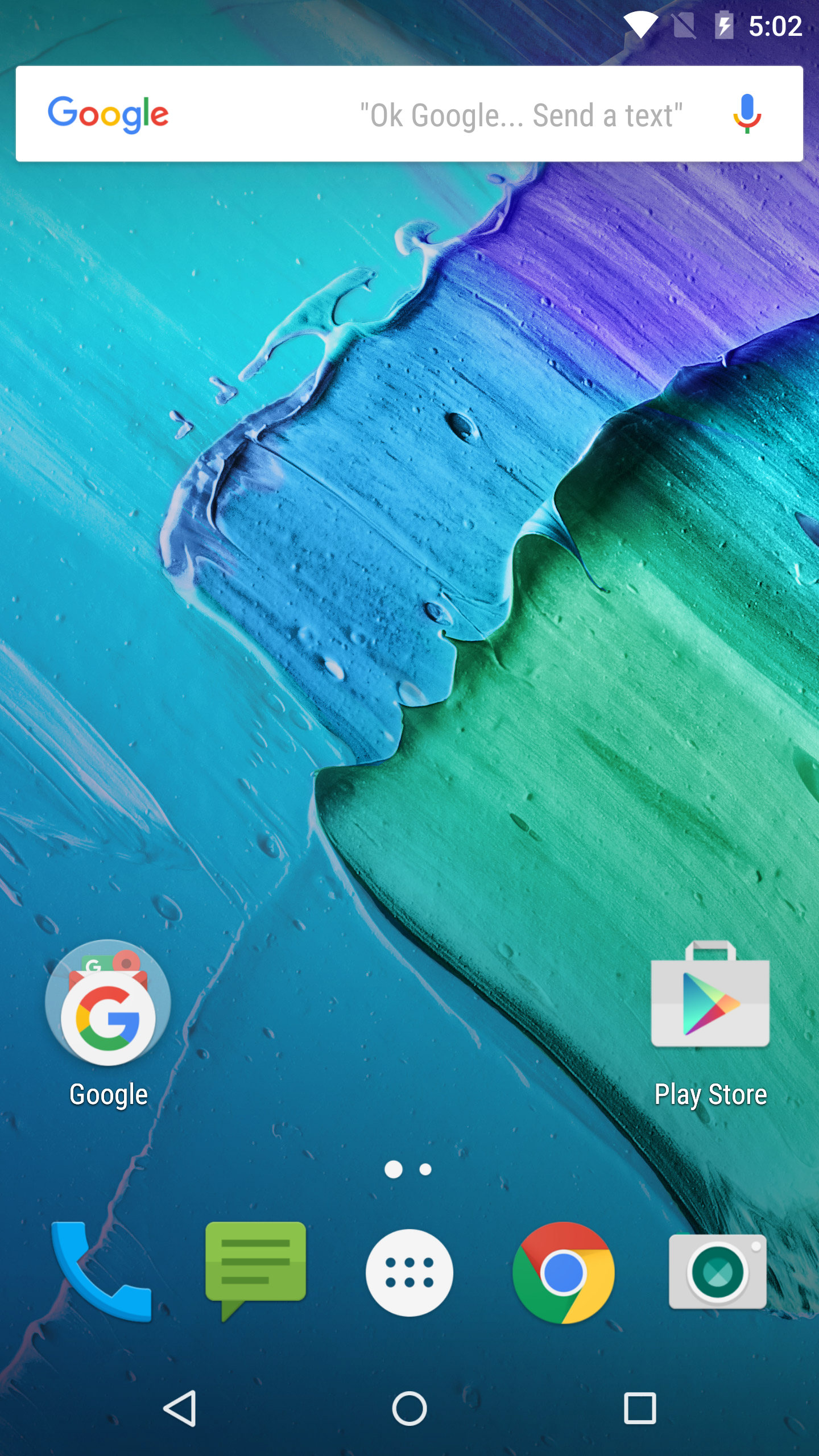
This fact, in and of itself, makes the Moto X worth your consideration. If you’re looking for a mid-tier device with decent specs and a stock Android experience, it deserves a look.
Motorola does add a few thoughtful additions to the Moto X, so it’s not 100% stock Android. But like the Moto G, Motorola’s additions are simple and even useful. Additional features include hands-free voice control, gesture-based activation for the flashlight or quick camera app launching, and more.
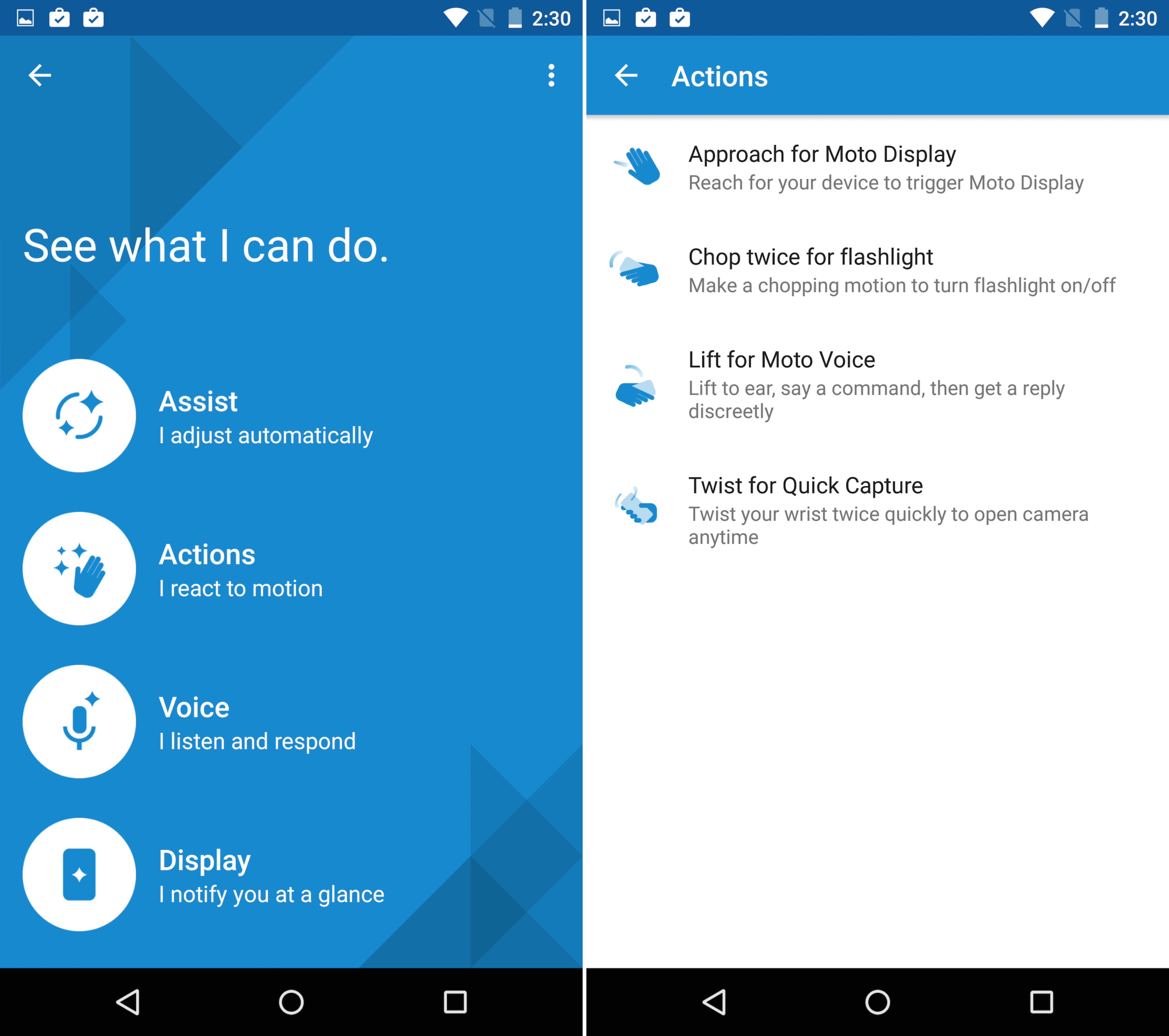
The bottom line is that the lightweight customizations found on the Moto X are a far cry from the heavy-handed and often overbearing UI and skins present on flagships like the HTC One M9 and the Galaxy S6.
Conclusion
The Moto X isn’t perfect. Its glitchy sound is probably the most noticeable flaw found in an otherwise solid offering. At $399 and up, it’s firmly in the mid-tier range as far as price is concerned. It comes with awesome features like front facing stereo speakers, a front facing flash, and a near stock Android experience.
The build quality lives up to the Moto X’s price point, and the screen is very large at 5.7″. If you’re looking for something a little more substantial than the Moto G, and your main device is an Android device, then the Moto X is worthy of your consideration.
If you’re looking for a secondary Android phone to go along with your iPhone, then I still pick the Moto G over this device, unless you absolutely need the larger screen or the mid-tier specifications.
All of that said, I wouldn’t feel ashamed if the Moto X was my primary daily driver. It has great build quality, a couple of headlining features, and puts it all together in an attractive package both looks-wise and price-wise.
Still, the flaw with the sound when rotating the screen is a pretty significant flaw in my opinion. Hopefully it’s one that Motorola will fix in short order.
Again, you can purchase the Moto X Pure Edition from Amazon for $399. It may be out of stock now, as it’s proving to be popular. You can always go to Motorola.com to order one that way, especially if you want custom colors.